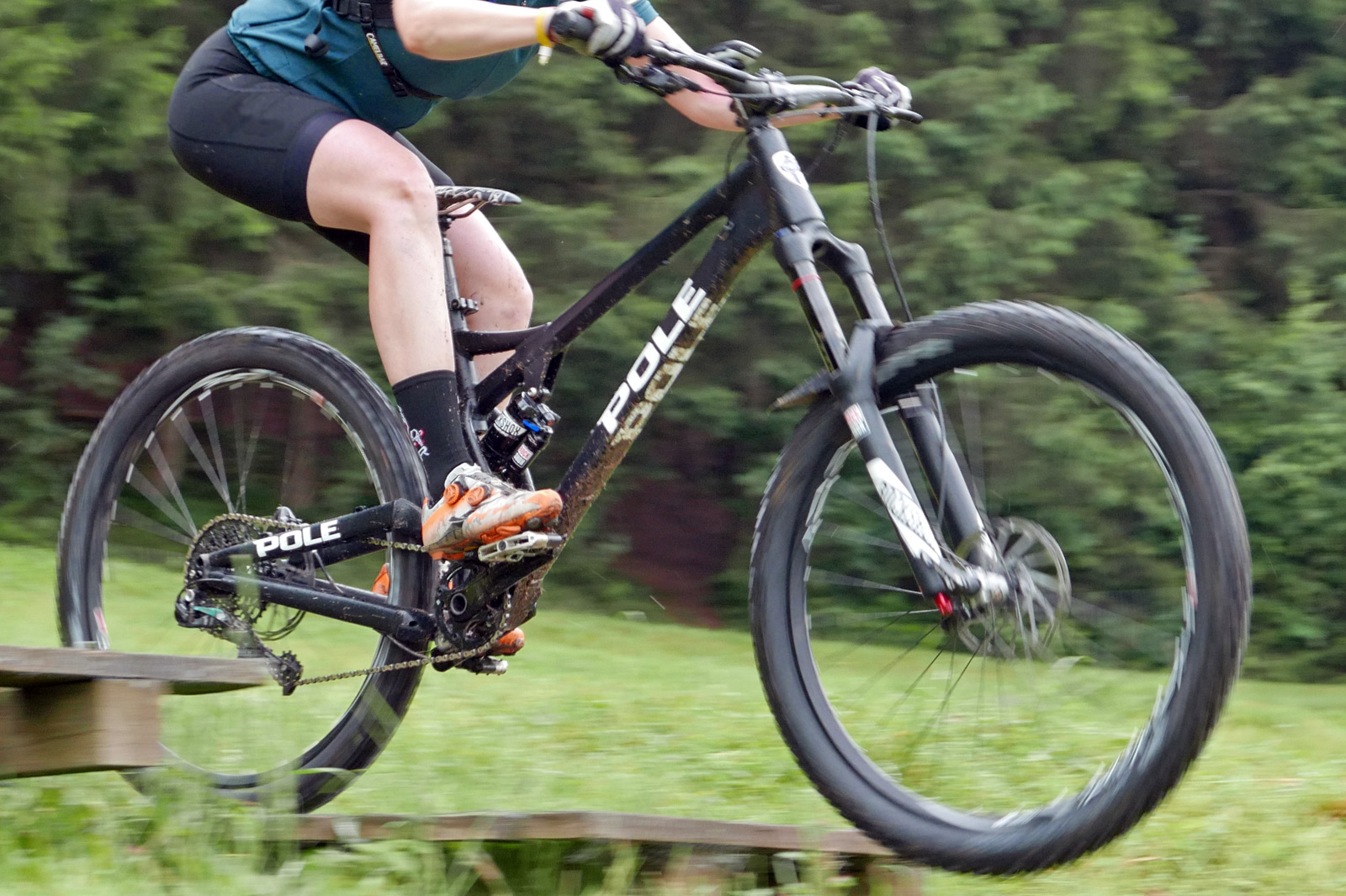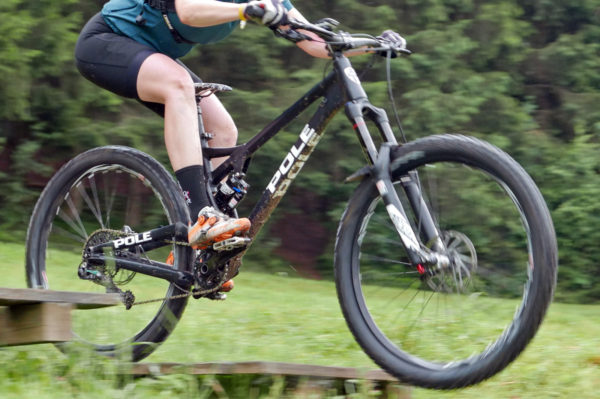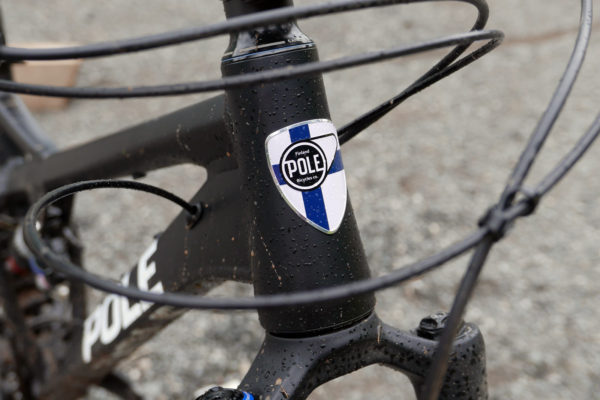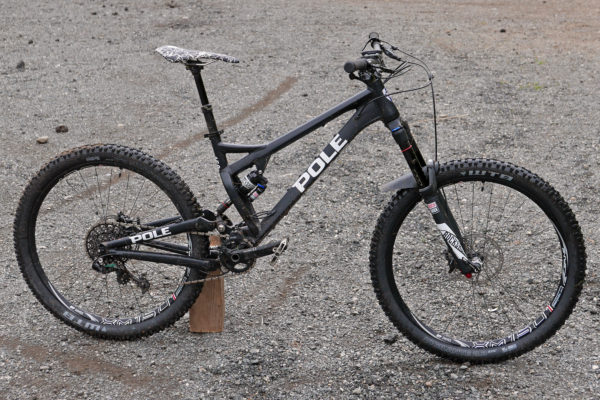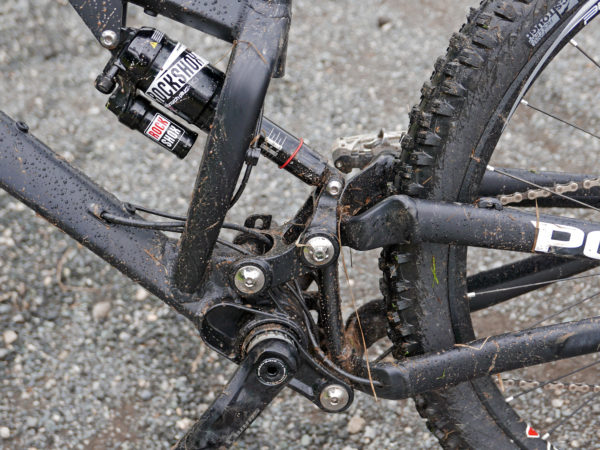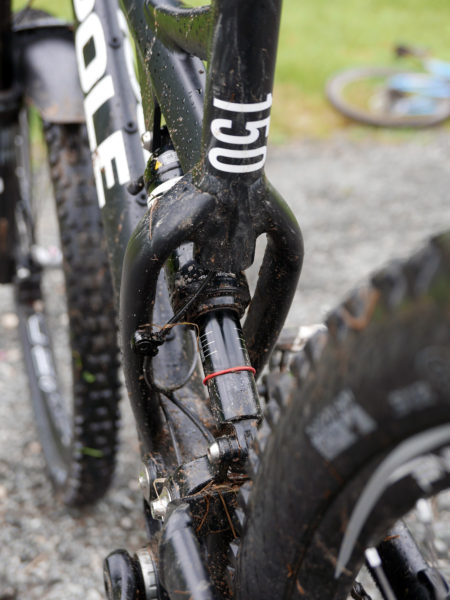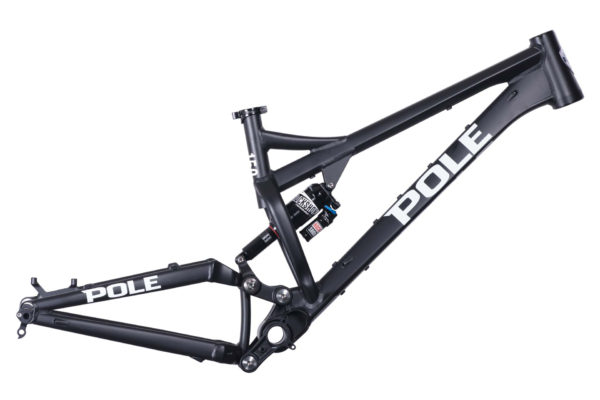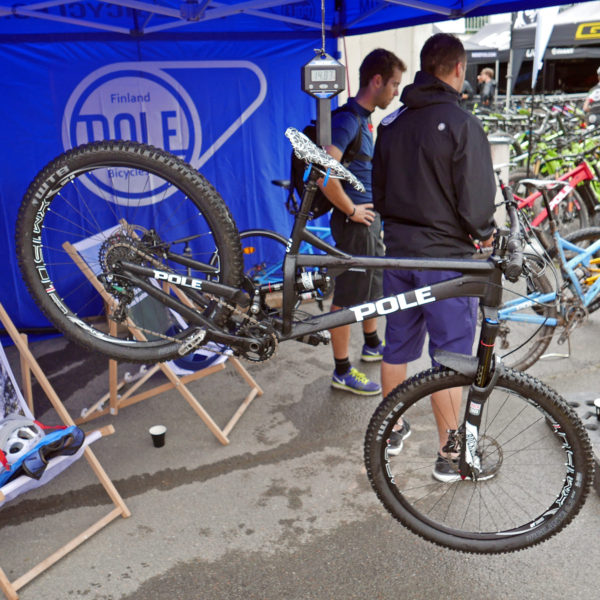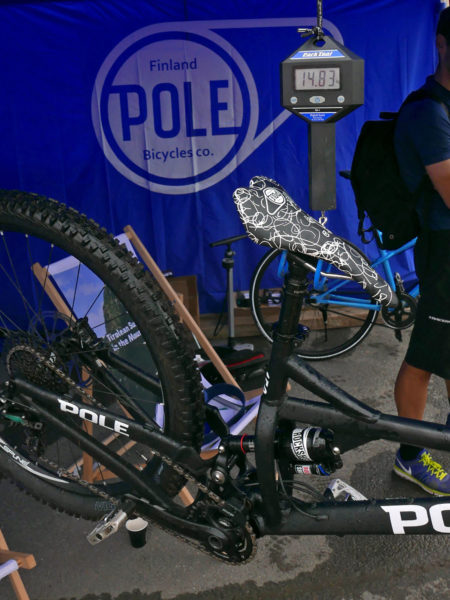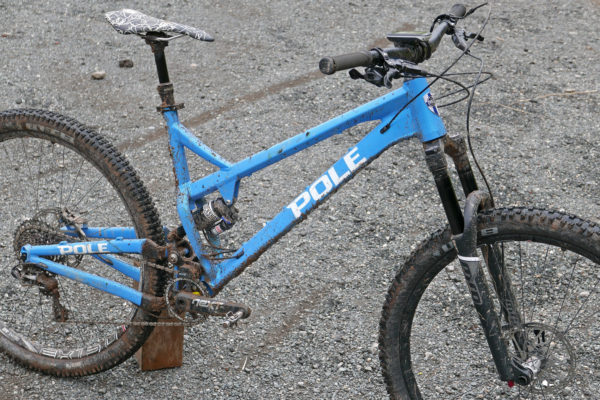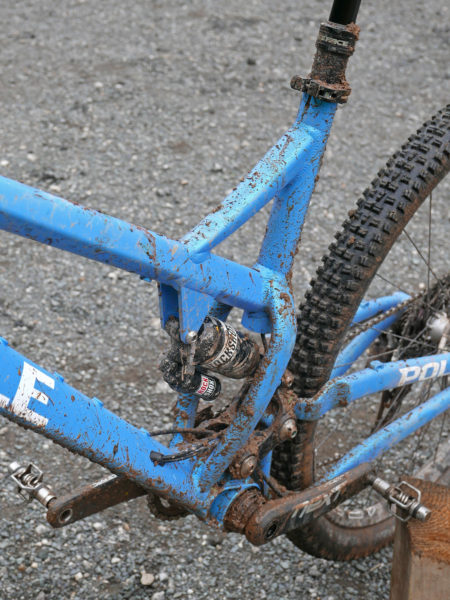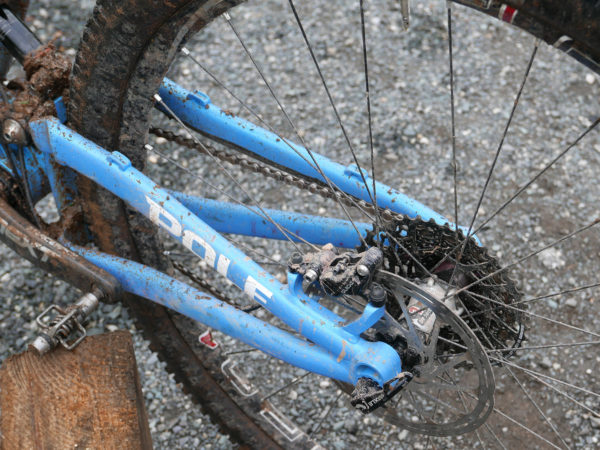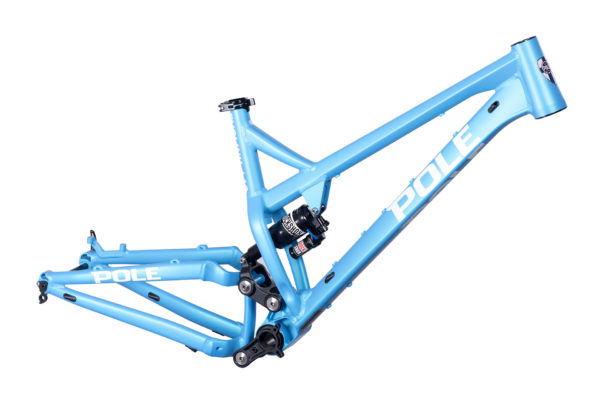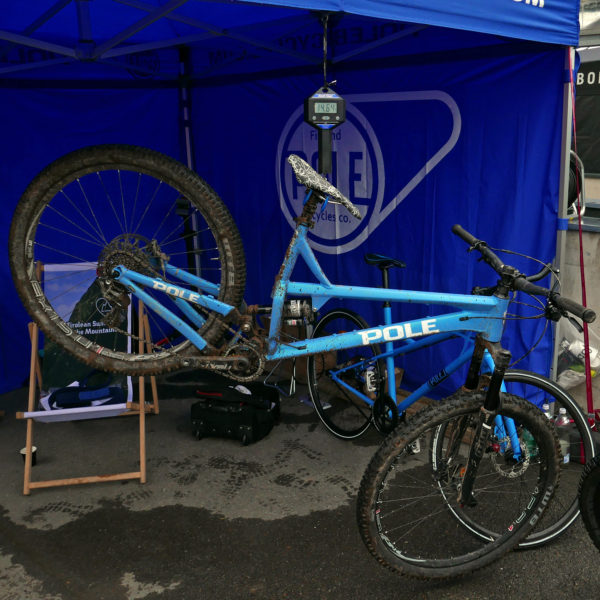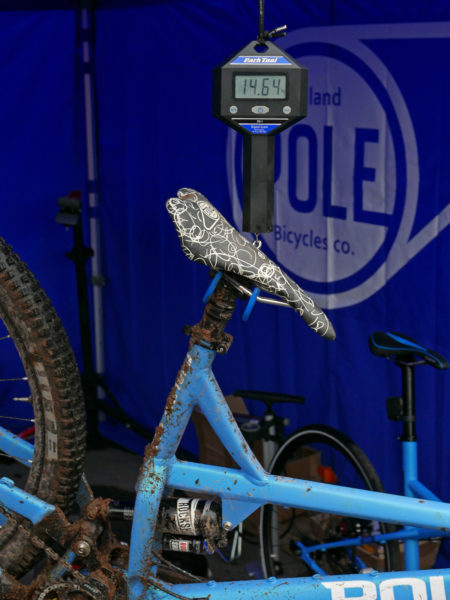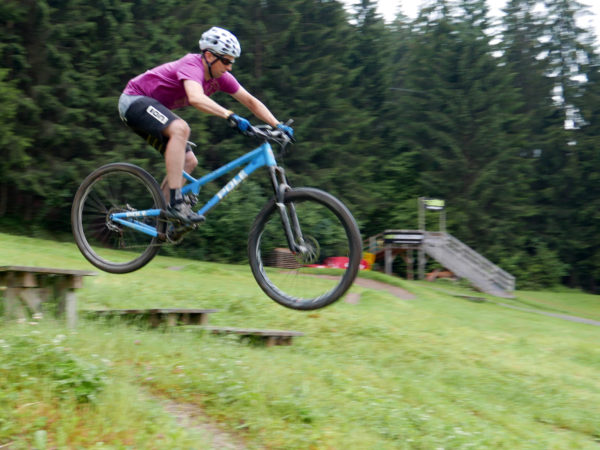Pole’s take on mountain bikes is a bit unique in the industry. While the recent trends of contemporary trail-ready geometry has pushed most bikes out with longer toptubes and slack head angles, Pole still stands apart with some of the longest wheelbases of any bike maker out there. All of their bikes look almost exactly the same, whether for XC or DH and everything in between, and they all share in the same philosophy that longer is better.
We’d covered the Finnish 110mm cross-country bike and 140mm trail bike back when they were introduced at the start of 2016, but later in the year, we took the opportunity to hit some gravity-fueled, lift-assisted trails in the Austrian Alps on some of the more enduro-focused bikes. Back before the snow fell on some familiar trails, we took the 29er Evolink 14o EN and 27.5″ Evolink 150 LD into the woods to give them a proper thrashing and see how those long wheelbases would react through the berms, technical trails, and rooted switchbacks…
With two sizes of testers we decided to opt for the longer travel 27.5″ bike and the slightly shorter travel 29er that both get a Enduro riding target. Our smaller bike was this S-sized Evolink 150 27.5 LD. With a mix of enduro racing and a downhill feel at it core, it pairs a 160mm fork to the 150mm of short link 4-bar suspension in this Light Duty frame. The LD frame uses a slightly lighter tubing set to keep weight down for smaller riders and comes with a 85kg/187lb rider+gear weight limit (our 160cm tester adds up to 60kg packed down & wet) and only in the smaller sizes XS, S & M. The HD version in M-XL is better suited for heavier riders.
Last time we saw them we talked about the fact that the Evolink bikes fold down easily making them a good option for those who travel or are tight for space at home. They also get two proper bottle cage mounts if you want to leave the Camelbak at home, both benefits from small bikes to big and XC to DH.
The Evolink 150 27.5 LD gets a head angle of just 63.5°, 455mm chainstays, and for the small a frame reach of 450mm. Our smaller rider spends most of her mountain time on short travel XC bike to mid travel trail bikes, so hopping on something slack and plush is always fun. But at the same time, if the pedaling efficiency isn’t there or it is too much work to steer the bike she loses interest fairly quickly. Pole openly says that they essentially developed their bikes to give a DH bike feel to enduro and cross country riding, so we thought it would be good to see what someone from the opposite perspective thought.
Overall she adopted the bike’s alternative handling rather quick and appreciated its stability. To her the bike never actually felt slow to turn. She was reluctant at first riding into tight berms and on wooden bridges through turns, but mostly just leaned back and let the bike go where she pointed it. A few times when the trails got really narrow she felt the need to slow down as the bike felt like it needed a little more effort to push it around, but once back up to speed the long slack geometry had her taking on rough sections & roots faster and drops at higher speed as well.
We did get the sense that even with the long 1254mm wheelbase, the bike seemed to work by putting a lot of weight on the front wheel with the steep 77.5° effective seattube angle. What that meant was that over the course of a day when trails went from dry and fast to wet and slippery, she started to notice the rear wheel slipping around a lot and ended up moving her weight back more on the bike to compensate.
At the same time the climbing we did was never long and sustained, but were never too bothered on the shorter steep climbs other than with the bike weighing more than most bikes our small tester rides. She had the feeling that you didn’t need to get up out of the saddle much, but a shorter stem and more upright position could have actually made extended climbs more comfortable.
The LD version doesn’t mean it is super light, it is still based around a solid 7005 aluminum frame. Our small test bike still wet from its last ride and clean-up tipped the scale at 14.83kg/32.7lb with pedals (including the 500g Crankbrothers Mallets) or 14.33kg/31.6lb without pedals. Built with a Pike RC, SRAM X01 group, DT Swiss XM1501 wheels, a Raceface dropper, and 2.3″ WTB Vigilantes the Evolink 150 27.5 LD was a capable bike and comes with a retail price tag of 5100€.
The larger wheeled L-sized Evolink 140 29 EN is the more burly race ready build of the bike we first saw back at the start of 2016, with a build kit said to be ready to race or to hit any type of trail you can sling at it. A degree steeper than the 150, it still is rather slack for a trail bike with a 64.5° headtube, essentially the same length rear at 456mm chainstays, and a frame reach in our large size of 510mm. Add that to a 1314mm wheelbase, and you certainly have a long bike.
Like the smaller bike this one also gets a steep 77.5° effective seattube angle, and again manages to get a lot of your weight out over that front wheel for steering traction and control.
Unlike our other tester, I spend more time on bikes with a more broad range of travel and was actually more resistant to the idea of the super long slack bike before riding it. Having ridden World Cup DH bikes on downhill courses and through slower tighter trails, I was a bit resistant to give up the typical trail geometry I’ve come to love. So when I first took the Pole into the woods I expected to have to muscle it through the turns.
Instead the bike pretty much just went wherever I pointed it with confidence. While I had really only looked at the wheelbase numbers ahead of time I overlooked the fact that even though this bike is long, the steep seatpost meant that when I sat on the bike I was well-balanced and could pick my way up even steep climbs and when the trail got steep & fast I could lean back and let the bike soak it up.
The result was that in the bigger open sections with fast berms and more broadly sweeping turns, I ended up setting a personal best time on the top of a trail I have ridden dozens of times over the years. After a quick learning curve I could keep weight on the front wheel and rail through turns. There are a few tight sections in the mix where I set a personal best, but when I descended farther into the more twisty, loose and rooty lower section of the same trail, my times were still quick aboard the Pole but not quite what I had managed on a smaller bike.
Without pedals the bigger bike ended up just 300g heavier than the smaller longer travel one. Our large Evolink 140 29 EN tipped the scale at 14.64kg/32.3lb. With shorter travel and more trail intentions, it got a slightly lighter X01 build with Raceface cranks, an MRP Stage fork, the same dropper & wheels, but slightly lighter tires for a retail price jump to 5600€.
So what is the end result. After both of us spending a day on the bikes, we’d be happy to do it again or to spend more time getting used to the bikes. The Pole Evolink certainly takes a bit of suspension of disbelief. We have been adapted to very similar geometry for trail riding bikes over the last decade or two. Sure there has been a recent trend to get a little slacker and a little longer, and that has been received very well.
Pole on the other hand takes that to an extreme. They’ve gone long. And while it will take a bit of getting used to if you jump on one of their bikes, once you stop thinking about it and just let the bike do its job, we realized that we could carve through turns faster, plow through rough sections of trail, and still pick out way through the tight twisty trails and over steep climbs.
